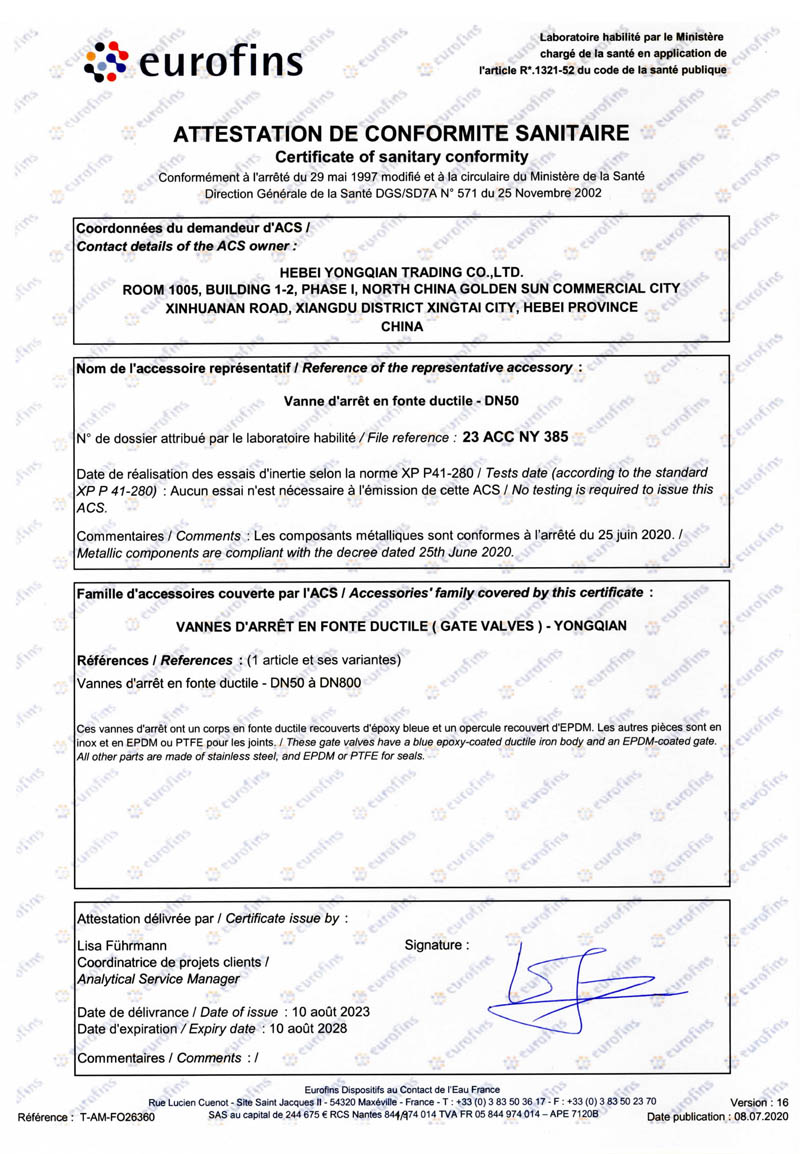Gear Operated Wafer Type Butterfly Valve for Efficient Flow Control Solutions
Understanding Wafer Type Gear Operated Butterfly Valves
Butterfly valves are widely used in various industries due to their simplicity, lightweight design, and efficient operation. Among the many types of butterfly valves, the wafer type gear operated butterfly valve stands out for its unique construction and operational capabilities. This article delves into the features, advantages, applications, and maintenance of wafer type gear operated butterfly valves.
What is a Wafer Type Butterfly Valve?
A wafer type butterfly valve is designed without flanges, featuring a disc that rotates within the pipeline to regulate flow. The wafer design allows the valve to be sandwiched between two flanges of the piping system, providing a compact and space-efficient solution. This type of valve is commonly operated by a manual gear mechanism, enabling precise control over the valve position.
Features of Gear Operated Butterfly Valves
1. Simple Design Wafer type butterfly valves have a simple yet effective design that comprises a disc, a stem, and a body. The disc is mounted on the stem and can be rotated to open or close the valve, providing quick and efficient flow regulation.
2. Operated by Gear Mechanism The gear-operated mechanism offers mechanical advantage, allowing for easier operation, especially in larger valves that require more force to operate. This also enables better control over the valve position, making it suitable for various applications.
3. Lightweight and Compact One of the defining characteristics of wafer type butterfly valves is their lightweight and compact design. This feature allows for easier installation and reduces the overall burden on the piping system.
4. Versatility These valves are compatible with a variety of media, including water, gas, and chemicals, making them suitable for diverse applications across multiple industries.
Advantages of Wafer Type Gear Operated Butterfly Valves
1. Ease of Operation The gear mechanism significantly reduces the effort required to open or close the valve, enhancing user convenience, especially in high-pressure systems.
2. Tight Seal Wafer type butterfly valves, when properly designed, provide an excellent sealing mechanism that prevents leakage when closed, ensuring the contained media remains secure.
3. Cost-Effective Compared to other types of valves, wafer type butterfly valves are often more affordable. Their lightweight nature further reduces shipping and installation costs.
5. Low Maintenance With fewer moving parts, these valves require minimal maintenance compared to other valve types, lowering long-term operational costs.
butterfly valve wafer type gear operated

Applications
Wafer type gear operated butterfly valves are versatile and can be found in various applications across different sectors including
1. Water Treatment Plants These valves regulate water flow and manage the distribution of treated water.
2. Oil and Gas Industry They are used in both upstream and downstream processes to control the flow of oil and gas in pipelines.
3. HVAC Systems In heating, ventilation, and air conditioning systems, these valves manage the flow of air and fluids efficiently.
4. Chemical Processing Their resistance to corrosion makes them ideal for handling various chemicals safely.
5. Food and Beverage Industry Used for controlling the flow of liquids in food processing, these valves ensure compliance with hygiene standards.
Maintenance Tips
While wafer type gear operated butterfly valves require minimal maintenance, regular checks can enhance their longevity and performance
1. Visual Inspection Regularly inspect the valves for signs of wear, corrosion, or leakage.
2. Lubrication Ensure that the gear mechanism is adequately lubricated to maintain smooth operation.
3. Seal Checks Periodically check seals for integrity to prevent leaks during operation.
4. Operational Testing Routine testing of the valve operation can help in identifying any potential issues before they become significant problems.
Conclusion
Wafer type gear operated butterfly valves offer a reliable and efficient solution for regulating flow in a wide range of applications. Their combination of simplicity, durability, and ease of operation makes them a preferred choice among engineers and operators in various industries. By understanding their features, advantages, and maintenance needs, users can maximize the performance of these valves, ensuring efficient and safe operation in their systems.
-
The Smarter Choice for Pedestrian AreasNewsJun.30,2025
-
The Gold Standard in Round Drain CoversNewsJun.30,2025
-
The Gold Standard in Manhole Cover SystemsNewsJun.30,2025
-
Superior Drainage Solutions with Premium Gully GratesNewsJun.30,2025
-
Superior Drainage Solutions for Global InfrastructureNewsJun.30,2025
-
Square Manhole Solutions for Modern InfrastructureNewsJun.30,2025
-
Premium Manhole Covers for Modern InfrastructureNewsJun.30,2025
